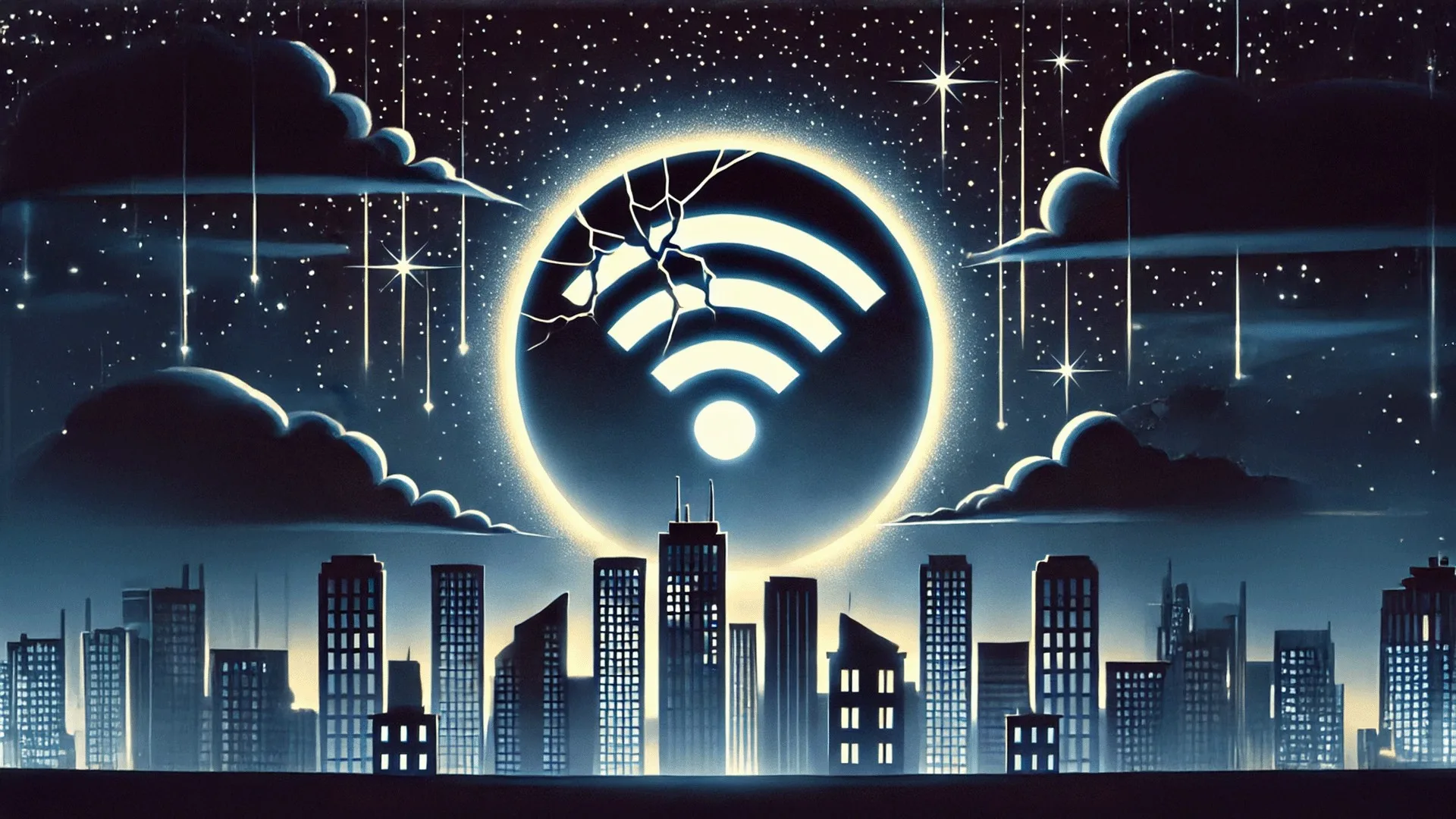Millions of people across the U.S. East Coast were left without internet access due to a significant Verizon Fios outage in the early hours o
Millions of people across the U.S. East Coast were left without internet access due to a significant Verizon Fios outage in the early hours of Tuesday morning. This disruption, lasting for several hours, triggered widespread inconvenience, particularly affecting individuals who rely on consistent internet access for work, school, and essential communication. In this article, we’ll examine the details of this outage, its potential impact, and broader implications for internet service reliability.
1. Scope of the Outage
According to reports from Downdetector, a leading third-party website for tracking service disruptions, the outage was extensive, spanning a 300-mile area from Philadelphia, Pennsylvania, to Richmond, Virginia. Users began reporting disruptions around midnight EST, with complaints peaking between midnight and 2 a.m. The primary nature of these complaints—90 percent of which were internet-related—painted a clear picture of a significant breakdown in Verizon’s network services.
Key Details:
- Regions Affected: Eastern U.S., including parts of Pennsylvania, Delaware, Maryland, and Virginia, and a small section of southern Kansas.
- Nature of Complaints: Primarily internet service issues (90%), with some reports of total blackout (9%) and TV streaming issues (1%).
2. Verizon’s Response and Communication
Verizon’s initial response to the crisis came via posts on X (formerly Twitter), where representatives acknowledged user complaints and cited either network maintenance or an outage affecting the area. In one post directed at a user complaint, Verizon Support stated: “There is either an outage or network maintenance impacting your area. We don’t have full details just yet. Our apologies for any inconvenience this is causing. We’re trying to get all the information from our network team so we can provide you all an update.”
While this response confirmed that Verizon was aware of the problem, it left users seeking more comprehensive updates. For many affected individuals, this brief acknowledgment did little to quell frustration as the outage extended past initial estimates.
Communication Highlights:
- User Updates: One Maryland user shared that repair work commenced at 10:50 p.m. EST, with restoration expected by 10:58 a.m. on Tuesday.
- Official Response: Limited to social media replies; no detailed official statement during the critical hours of the outage.
3. Public Reaction and Criticism
The public reaction to Verizon’s handling of the outage was swift and vocal. Social media platforms were inundated with users expressing frustration over the lack of a proactive announcement or broader acknowledgment from the company.
User Reactions:
- A commenter noted, “The @Verizon FiOS network has been down for nearly two hours and neither they nor @VerizonSupport have posted anything.”
- Another user highlighted concerns over transparency, writing, “So. Massive widespread Fios internet outage with no acknowledgment from Verizon. It’s been over an hour. They don’t seem to be acknowledging anyone.”
These posts emphasize a growing expectation among consumers for real-time communication from service providers, particularly during significant service disruptions.
4. Possible Causes of the Outage

While Verizon did not immediately disclose the specific cause of the disruption, the nature of fiber-optic networks and historical precedents allow for educated speculation. Fiber-optic systems, known for their high capacity and reliability, can still be vulnerable to issues such as:
- Physical Cable Damage: Construction work or accidental cuts can lead to extensive service outages.
- Network Maintenance: Routine or emergency maintenance without prior public warning can result in unplanned outages.
- Software Glitches: Updates or technical faults in network management software may cause unexpected downtime.
- Weather-Related Issues: Severe weather conditions can impact both physical infrastructure and electrical systems.
Understanding the exact cause requires a detailed statement from Verizon, which has yet to be provided.
5. Wider Impact on Internet Service Providers
This incident with Verizon Fios did not occur in isolation. Downdetector and Outage.Report noted a concurrent rise in reports for other major internet service providers, including AT&T, Cox, and Xfinity. The overlap suggests potential regional disruptions impacting multiple service providers simultaneously, or possibly a shared infrastructural issue affecting different networks.
Insights:
- The surge in outages across several providers may point to shared infrastructure problems, such as a major backbone provider experiencing issues.
- Alternatively, coordinated cyberattacks, although less likely without further evidence, cannot be ruled out entirely.
6. Customer Expectations and Future Implications
This recent event underscores the critical nature of high-quality communication and reliability in internet services. For a major provider like Verizon, which boasts a user base dependent on its services for essential activities, expectations for transparency and responsiveness are high.
Lessons for Service Providers:
- Proactive Communication: Establishing a standard for alerting customers about outages or maintenance in real-time can mitigate frustration and maintain trust.
- Resilience and Redundancy: Providers may need to reevaluate network redundancies to ensure minimal disruption during outages.
- Investing in Customer Support: Strengthening support channels to provide immediate assistance and information during outages is crucial.
Consumer Advice:
- Backup Plans: Individuals and businesses should consider alternative internet options or failover solutions (e.g., mobile hotspots) to maintain connectivity during major outages.
- Monitoring Tools: Using tools like Downdetector to stay informed about service status can provide early insights into broader issues.
7. Verizon’s Track Record and Recent Outages
This outage is not an isolated event for Verizon. Reports of significant service interruptions have surfaced in recent months, including outages in September and October. These repeated disruptions could signal a need for Verizon to reassess and bolster its infrastructure and protocols for quicker recovery and customer communication.
Historical Context:
- September and October Outages: Similar complaints were reported, with Verizon Support handling user grievances primarily through social media interactions.
- Long-term Strategy: A review of Verizon’s historical outage responses indicates a gap between user expectations and the company’s public communication strategy.
8. The Future of Fiber-Optic Services
Fiber-optic technology remains a gold standard for internet services, offering superior speed and reliability compared to traditional copper-based systems. However, as this outage demonstrates, even advanced infrastructure is susceptible to failures.
Future Trends:
- Infrastructure Investments: Continued upgrades and strategic maintenance are necessary to strengthen fiber-optic networks against both physical and digital threats.
- Industry Collaboration: Providers may benefit from working together to improve shared infrastructure and respond collectively during regional outages.
Conclusion
The recent Verizon Fios outage that affected millions along the U.S. East Coast sheds light on the vulnerabilities present even in robust, modern fiber-optic networks. While Verizon’s response was met with criticism for its limited initial communication, the event serves as a reminder of the importance of proactive transparency and infrastructural resilience in maintaining public trust.
Customers and providers alike can draw valuable lessons from this incident. For users, having contingency plans can ensure uninterrupted access during unexpected downtime. For service providers, refining communication protocols and reinforcing network reliability will be essential steps toward fostering a dependable internet service landscape.
Check out how GorillaFlow can benefit you, click here to find more.


